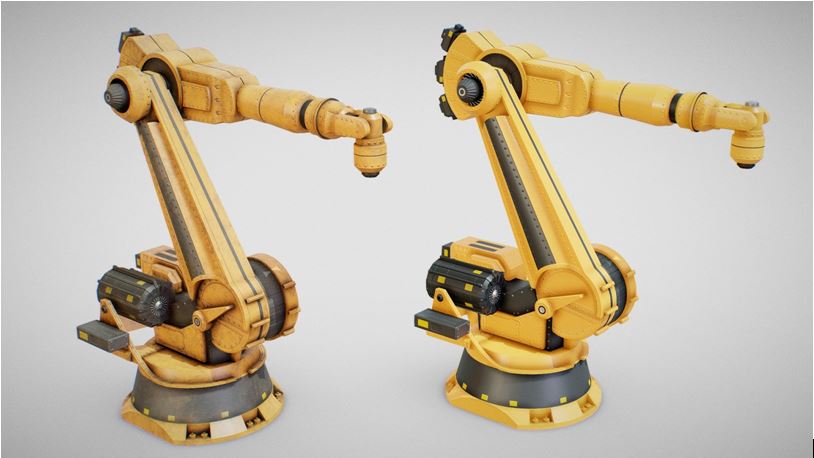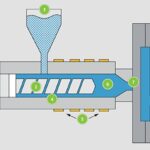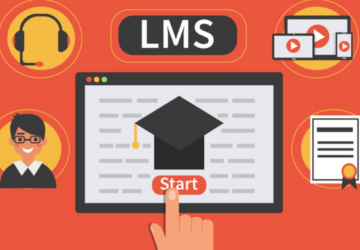Introduction:
Businesses are continually looking for novel solutions to boost production, improve safety protocols, and remain competitive in today’s fast-paced industrial scene. 3D modeling is one such approach that has completely changed the industrial automation market. By utilizing cutting-edge CAD technology, 3D modeling has emerged as a crucial tool for streamlining industrial operations, enhancing decision-making, and increasing productivity. We’ll look at the many benefits of 3D modeling for industrial automation in this blog post, including how it boosts productivity and safety.
Visualizing Complex Systems:
The capability of 3D modeling to provide virtual representations of intricate systems is one of the technology’s key benefits in industrial automation. Large-scale production lines, complex machinery, and related parts are frequently used in industrial processes. The advantages of visualizing these systems in a virtual setting include:
Comprehensive Understanding: 3D modeling allows engineers and operators to gain a comprehensive understanding of complex systems. By visualizing the machinery, equipment, and production processes, they can analyze the interconnections, identify potential bottlenecks or inefficiencies, and devise strategies for improvement. This detailed comprehension enables better decision-making and optimized resource allocation.
Planning and Layout Design:Effective planning and layout design are essential before deploying an industrial automation system. Engineers can determine the optimal arrangement and optimize the architecture for efficient operations thanks to 3D modeling, which presents a realistic depiction of the actual area, machinery, and equipment. It enables the effective use of space and resources by assisting in the identification of possible conflicts, spatial limitations, and places that need adjustment.
Workflow Optimization: Engineers can assess the movement of materials, components, and finished goods within the production line by visualizing complicated systems. They can spot possible snags or places where the workflow might be improved for greater effectiveness. Different process configurations can be investigated using simulations and scenario testing in order to determine the most effective and fruitful option. Through this optimization, production time is cut, waste is reduced, and overall productivity is raised.
Error Detection and Prevention:Even small mistakes in an intricate industrial system can have big repercussions. Engineers can see problems early on and prevent them with the help of 3D modeling. Engineers can find potential collisions, interferences, or design defects that could cause accidents, equipment failures, or production halts by realistically modeling the system’s functioning. By using a proactive approach, engineers can fix mistakes before they happen, reducing risks and assuring efficient operations.
Design and Prototyping:
The potential of 3D modeling to simplify design and prototyping processes is another important benefit in industrial automation. Historically, designing and prototyping industrial machinery and parts took a lot of time and money. However, 3D modeling has transformed this area by offering a number of advantages, including:
Virtual Design Environment: 3D modeling offers a virtual design environment where engineers can create and refine industrial equipment and components. Using specialized CAD software, they can design intricate 3D models with precision and accuracy. This virtual environment allows for quick modifications, iterations, and experimentation, significantly reducing the time required for the design phase.
Error Detection and Optimization: Engineers can find performance problems and design faults before physical production by developing virtual prototypes. They can evaluate the components’ fit, functionality, and form and make the necessary modifications to improve their performance. This iterative method enables the development of strong designs that satisfy the necessary requirements, improving product quality.
Cost and Time Savings:Traditional, time- and money-consuming trial-and-error procedures are replaced by 3D modeling for design and prototype. Businesses can dramatically lower the expenses of material waste, tooling, and physical prototypes by developing virtual prototypes. In addition to saving time over revising real prototypes, the ability to modify designs in a virtual environment.
Design Verification and Validation:Engineers can conduct extensive design verification and validation testing thanks to 3D modeling. They can assess the design’s overall effectiveness, measure structural integrity, examine stress spots, and simulate real-world events. This exhaustive examination guarantees that the final product complies with safety and quality standards by helping to spot potential problems.
Collaboration and Feedback: Effective communication between designers, engineers, and other parties involved in the design process is made possible through 3D modeling. Virtual prototypes are simple to share and evaluate, enabling quick feedback and suggestions. This cooperative method improves communication, reduces misunderstandings, and makes sure that everyone is on the same page with the design goals.
Simulation and Optimization:
Industrial automation must include simulation and optimization, and 3D modeling is essential to making these processes possible. Three-dimensional (3D) modeling offers a variety of advantages for simulation and optimization through the creation of virtual representations of industrial systems and the use of cutting-edge computer-aided design (CAD) technologies:
Accurate Performance Evaluation:Engineers can accurately replicate the operation of industrial systems using 3D modeling. Engineers can assess the system’s performance in various scenarios by entering real-world data and characteristics such as production rates, material attributes, and ambient variables. This thorough performance assessment reveals any potential bottlenecks, inefficiencies, or areas for development.
Scenario Testing and Analysis:Engineers can perform scenario testing with 3D modeling to investigate various configurations and possibilities. They are able to model and assess the effects of adjustments to the production process, the location of the equipment, or the workflow. Engineers can find the most effective and practical solutions by contrasting and evaluating various scenarios. Making decisions and maximizing the system’s performance are made easier with the help of this study.
Resource Allocation and Planning:Effective resource allocation and planning are made possible by simulation and optimization through 3D modeling. Engineers can evaluate how well equipment, labor, and materials are being used. They can increase total productivity by analyzing manufacturing processes, material flow, and equipment capacity to optimize resource allocation and eliminate waste. Improvements in operational efficiency and cost savings result from this improvement.
Minimizing Risks and Errors:Engineers can recognize and reduce potential risks and mistakes using simulation. They can find safety risks, design faults, or process inefficiencies that may cause accidents, equipment breakdowns, or production interruptions by digitally testing the system’s functionality. This proactive approach enables modifications and improvements to be made before the system is put into use, lowering risks and enhancing safety precautions.
Continuous Improvement:Industrial automation may be continuously improved utilizing simulation and optimization using 3D modeling. Engineers are able to evaluate data from actual operations, pinpoint areas for improvement, and model the effects of suggested adjustments. Businesses can achieve continual optimization by introducing iterative enhancements based on these simulations, ensuring that their systems are always performing at their best.
Enhanced Safety Measures
Industrial automation places a high priority on safety, and 3D modeling offers useful tools for enhancing safety precautions in a number of ways. 3D modeling leads to improved safety in industrial settings by developing virtual environments and simulating procedures. The following are the main ways that 3D modeling improves safety measures:
Hazard Identification and Risk Assessment:Engineers and safety experts can locate potential dangers in the virtual environment by using 3D modeling. They can visually assess risks and examine component interactions by precisely modeling equipment, machinery, and processes. This makes it possible to proactively identify safety risks like collisions, entanglements, or pinch spots, which can subsequently be handled by taking the necessary precautions.
Virtual Safety Testing:Before putting safety measures into practice in the real world, they can be tested virtually via 3D modeling. Evacuation plans, emergency response protocols, protection barriers, and safety gadgets are all evaluated in this process. Potential flaws or defects can be found and fixed by simulating scenarios and evaluating the efficacy of safety measures in the virtual environment, guaranteeing the highest level of safety during real-world operations.
Training and Familiarization: 3D modeling, combined with virtual reality (VR) or augmented reality (AR) technologies, offers immersive training experiences for operators and workers. They can undergo virtual safety training, where they are exposed to realistic environments and simulated hazardous situations without actual risks. This training enables them to practice safety procedures, recognize potential dangers, and respond appropriately, thus enhancing their safety awareness and preparedness.
Preemptive Safety Measures:Safety precautions can be put in place even during the design phase with the help of 3D modeling. The virtual model can be used by engineers to check for any safety problems and integrate the essential safety elements early on. By using a proactive approach, safety considerations are made a priority during the design phase, reducing the need for later, expensive retrofits or modifications.
Ergonomics and Human Factors: The evaluation of ergonomic elements and interactions between people and machines is possible using 3D modeling. Within the virtual environment, engineers can assess the ergonomics of workstations, access points, and equipment interfaces. This research facilitates the creation of safer and more accommodating work environments by identifying ergonomic concerns like repetitive strain injuries or poor body mechanics.
Training and Education:
In the field of industrial automation, 3D modeling is essential for training and instruction. 3D modeling improves learning opportunities and supports efficient training for operators, engineers, and other professionals by generating virtual settings and interactive simulations. The following are the main ways that 3D modeling benefits instruction and training:
Realistic Visualization:Industrial processes, machinery, and equipment can be represented visually in a realistic manner thanks to 3D modeling. With the aid of this immersive visualization, students may better comprehend difficult ideas and get a complete picture of the system. Trainees can explore various elements, analyze their functions, and gain a thorough understanding of the automation system by engaging with the virtual environment.
Interactive Simulations:Interactive simulations that resemble real-world situations can be made thanks to 3D modeling. Trainees can participate in practical training by using virtual tools and interacting with simulated procedures. This participatory method helps students retain more information and acquire useful skills. In a secure and monitored virtual environment, trainees can practice problem-solving, judgment, and critical thinking.
Safety Training:There are inherent risks in industrial automation, and 3D modeling enables efficient safety training. In a virtual setting, trainees can study safety regulations, spot potential dangers, and practice emergency response techniques. Trainees can increase their awareness of safety, learn how to reduce risks, and react appropriately to provide a safe working environment by imitating dangerous circumstances without taking any actual risks.
Equipment Familiarization:Trainees might become more comfortable with complicated machinery and equipment through 3D modeling. Students can investigate the virtual representations of the tools, research their features, and comprehend how the various parts interact. Through familiarization, they gain a deeper understanding of the machinery and gain confidence in their ability to operate and maintain it efficiently.
Process Optimization:Trainees can study and improve industrial processes using 3D modeling. Trainees can locate system bottlenecks, inefficiencies, or opportunities for improvement by simulating various scenarios. They can assess the effects of modifications, experiment with different process setups, and create plans to increase production and efficiency. Critical thinking and problem-solving abilities are fostered through this process optimization training.
Remote and Virtual Training:A larger audience can now use 3D modeling services that promote remote and virtual training. Since the virtual world is accessible from everywhere, there are no longer any limitations on accessibility or physical location. Remote learning meets the needs of a geographically scattered workforce, allowing for flexible scheduling, and lowers travel expenses. The ability to revisit and revise course content as necessary during virtual training also helps students retain more of what they have learned.
Collaboration and Communication:
Successful industrial automation projects must include collaboration and communication, and 3D modeling offers useful tools to improve these elements. 3D modeling makes it easier for numerous stakeholders to access and share a virtual environment, which enables effective cooperation and communication in the following ways:
Shared Visualization:Instead of relying on technical drawings or abstract concepts, 3D modeling allows stakeholders to interact with a virtual model that accurately represents the automation system. This shared visualization helps align everyone’s understanding, reduces misunderstandings, and promotes effective communication.
Remote Collaboration:Remote collaboration is made possible through 3D modeling, allowing participants to cooperate regardless of where they are physically located. Team members from various departments, offices, or even nations can work together in real time by connecting to the virtual model. Travel is no longer necessary, and seamless communication is made possible. This boosts productivity and enables quicker decision-making.
Design Reviews and Feedback: Stakeholders may conduct design reviews and offer comments more easily with 3D modeling. Stakeholders may visually explore the virtual model, spot possible problems, and offer detailed input rather than just relying on technical drawings or textual explanations. The review process is streamlined, misconceptions are diminished, and more precise design iterations result from this visual communication.
Interdisciplinary Collaboration:Collaboration between multiple disciplines, including engineering, design, production, and maintenance, is necessary for industrial automation initiatives. A common platform for collaboration and knowledge exchange between stakeholders from many disciplines is provided by 3D modeling. This multidisciplinary cooperation encourages a holistic approach, makes ensuring all project components are taken into account, and stimulates creativity by incorporating many points of view.
Improved Decision-Making: By giving stakeholders detailed visual information, 3D modeling facilitates informed decision-making. Stakeholders may analyze design choices, gauge possible effects, and make data-driven decisions by engaging with the virtual model. Stakeholders may better comprehend the effects of their decisions by visualizing and simulating many situations, which results in more intelligent and wise decision-making.
Enhanced Communication with Clients and Suppliers:Throughout the course of a project, 3D modeling makes good communication with clients and suppliers possible. Client expectations and project needs are made clearer as a result of the clients’ improved ability to envision and comprehend the proposed automation system. In order to ensure smooth cooperation and effective supply chain management, suppliers may also interact with the virtual model to get insights into component specifications and integration needs.
Conclusion
In conclusion, 3D modeling revolutionizes the field of industrial automation by providing numerous advantages that enhance productivity, safety, and overall project success. The blog discussed various aspects where 3D modeling proves invaluable, including visualizing complex systems, design and prototyping, simulation and optimization, enhanced safety measures, training and education, and collaboration and communication.
Engineers may more easily comprehend and evaluate complicated systems by using 3D modeling to correctly depict and visualize industrial processes and systems. 3D modeling helps design and prototyping because it enables quick iterations, financial savings, and better product development. Businesses may analyze performance, locate bottlenecks, improve resource allocation, and make data-driven choices to increase efficiency through simulation and optimization utilizing 3D modeling.
Through the identification of possible risks, virtual safety testing, and thorough safety training, 3D modeling helps to improve safety measures. Realistic representations, interactive simulations, and chances for remote learning are all made possible by the use of 3D modeling in training and education, giving professionals the information and skills, they need to be successful in their careers.
Through 3D modeling, stakeholders may share a visual knowledge, interact remotely, give comments, and make educated decisions, which greatly improves collaboration and communication. This results in more efficient project collaboration, quicker decision-making, and successful dispute resolution.








